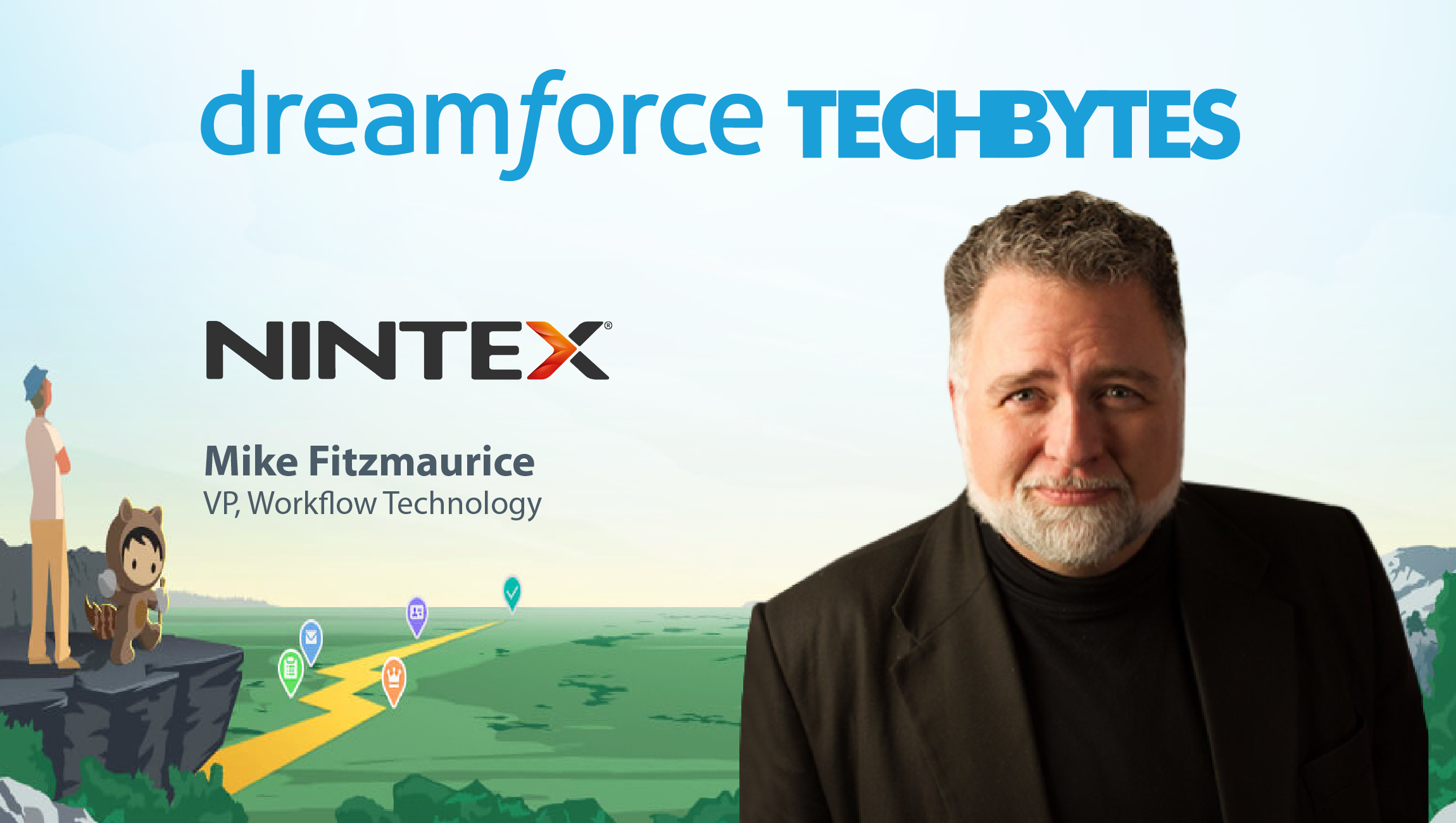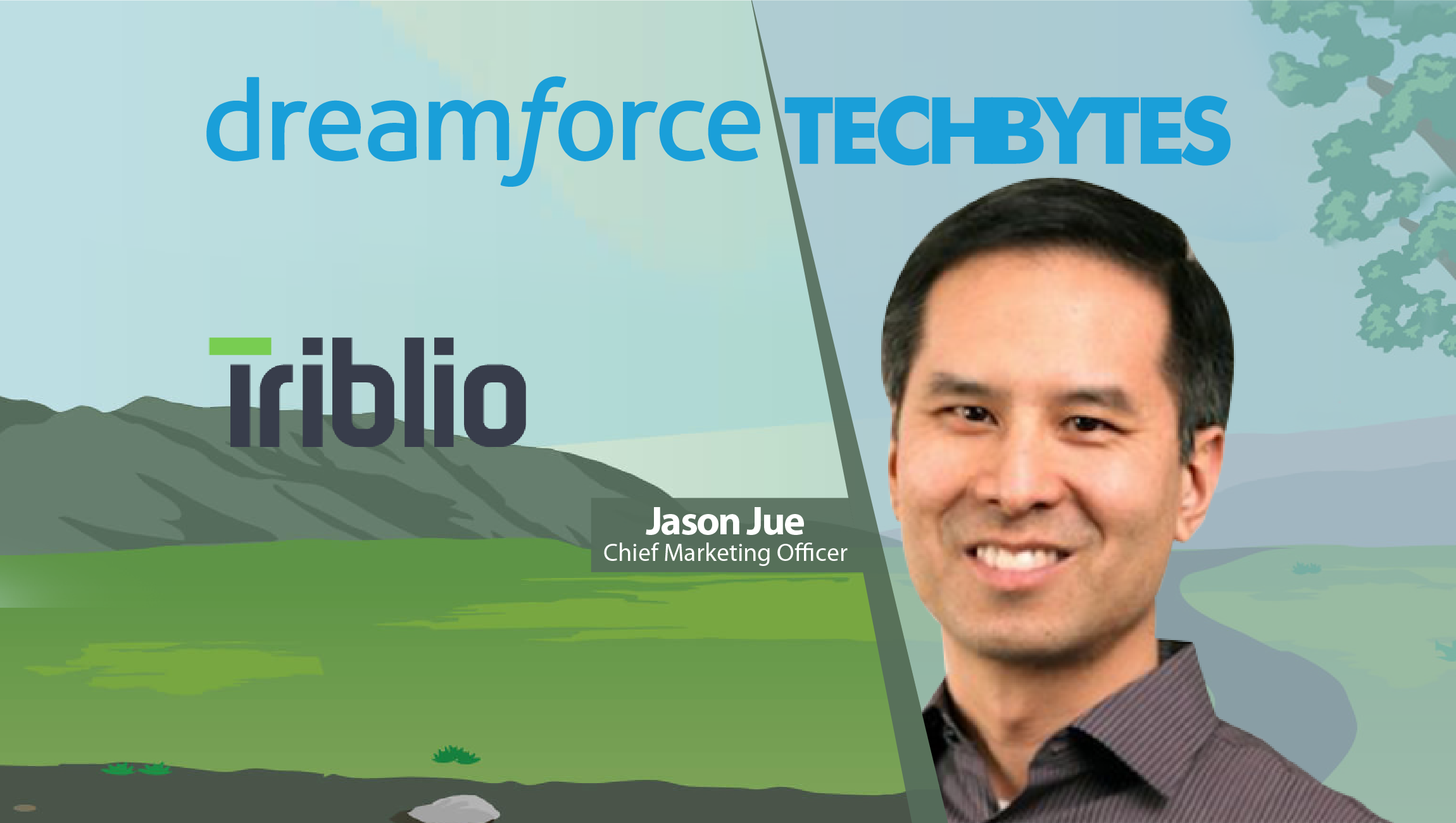Mike Fitzmaurice
VP, Workflow Technology at Nintex
Salesforce Dreamforce is one of the biggest software conferences in the world. In the run-up to this event, we unveil our special TechByte series featuring high-profile Dreamforce attendees and MarTech Champions. We spoke to Mike Fitzmaurice, VP, Workflow Technology, Nintex, to see how he views the event.
MTS: What’s the biggest attraction for you at Dreamforce 2017?
Mike Fitzmaurice: Every year, the biggest attraction for me is definitely the community. We are always in awe of the scope of the Salesforce customer, partner, and vendor base and the myriad things they do with it.
MTS: Based on past Dreamforce experience, what would be your key takeaway or tip for the event?
Mike: The Salesforce platform is flexible enough to be used for an ever-expanding set of business problems. Nintex itself releases Nintex Workflow for Salesforce as a prime example of that. But it’s been a very long time since Salesforce.com was about only customer relationship management.
Also Read: Dreamforce TechBytes with Vinod Muthukrishnan, CEO, Cloudcherry
MTS: What do you think will be some of the biggest martech-related announcements at the conference this year?
Mike: The rise of low-code platforms (“clicks-not-code”) has been a major theme at Dreamforce this year. However, it falls short of the goal. It’s not enough to free people from coding like a developer – you have to free people from having to think like one. If all you do is eliminate code, you only gain some productivity from fewer typos and visits to StackOverflow. It’s not enough. Drag-and-drop solution design needs to look and feel like instructions you give to — or better still, a conversation you have with — an assistant. They need to be understandable to others — and also to you when you go back a few months later to improve on your previous effort. The goal is to be easy – and easy is harder than it looks.
Another significant theme has been how MyEinstein and predictive analytics will shape the future of work and collaboration. A problem owner needs to feel like a problem solver, not a damsel in distress. Plenty of tools – obviously including Salesforce and Nintex – are emerging to assist with this. But the days of begging IT to add your needs to their application backlog are gone. We have our own budgets and a literal universe of ready-to-use tools to solve our own problems. It’s great – but it requires a change of mindset. Prediction is wonderful, but alone it’s not enough. Fortunately, Salesforce gets this and loves partnering with companies like Nintex. We are extremely bullish on MyEinstein, and we can’t wait to work with it in a big way. Salesforce can automate discovery and inference, and Nintex will happily automate action and interaction triggered by every single thing MyEinstein identifies as important.
MTS: How has marketing technology evolved since Salesforce acquired SteelBrick?
Mike: Since the SteelBrick acquisition, no one is standing still, and the competition has been beneficial for everyone – especially marketers making use of these SaaS offerings.
Also Read: Dreamforce TechBytes with Ed King, CEO, Openprise
MTS: Do you think a company like Nintex would improve the adoption of newer technologies for ABM, Customer Experience, and Content Management?
Mike: Yes, of course. Nintex extends the reach of any technology to a myriad of people, content, and processes. Those islands of functionality become connected and part of a bigger picture when they’re pressed into the service of an intelligent business process.
MTS: How do you see modern data companies coping with the imminent GDPR-induced disruptions?
Mike: The GDPR all but mandates that every company doing business with the European Union adopt some form of process automation. Sending a customer a report of all data they have on them? Providing a means to correct that data on request? A means to delete it when someone wants to be “forgotten”? Those are processes. Their ERP vendor alone can’t provide this, nor can their EFSS, CRM, or other LOB app vendor – because data on an individual is spread across many different systems. They’re going to need either a very elaborate policies-and-procedures document that shows employees how to handle those tasks manually, or intelligent process automation software that does those things for them. I know which one I’d choose.
Also Read: Dreamforce Techbytes with Joe Hyland, Chief Marketing Officer, ON24
MTS: Would you provide us your take on how AI-driven marketing may evolve in the coming years, and what it might look like by 2020?
Mike: We’re hitting the inflection point where AI is becoming usable. It’s packaged into services marketers and others can use. AI as a discipline will evolve in ways I can’t necessarily predict, but I can – with certainty – predict that marketers will spend the next two years making aggressive use of AI. They’ll make some mistakes – but they’ll have a lot more successes. AI makes customer intimacy scalable. We can’t not take advantage of that.
MTS: Thanks for chatting with us, Mike.
Stay tuned for more insights on marketing technologies. To participate in our Tech Bytes program, email us at news@martechseries-67ee47.ingress-bonde.easywp.com
Also Read: Dreamforce TechBytes with Scott Brinker, VP Platform Ecosystem, HubSpot











